
- Mar 24, 2021

Essays in 6th Grade: A Basic Format that Elevates the Standard 5-Paragraph Structure

6th grade is such a funny year. Funny haha and funny weird. Student writing levels are all over the map. You will have students coming to you writing on a very elementary level, still needing loads of help with grammar and paragraph formation. Then, you will have students ready to write critique pieces and analyses. How do you navigate this? Read to find out more!
Give Them a Format...to Start
I've learned that 6th graders still need format . They still need structure. They still need checklists. As much as I loathe limiting them in this way, I think it is very reassuring to them. That's not to say you can't tweak for the strong writers, but I do still feel they need it.
For my students in particular, I like to let them dabble in looser formats of non-fiction writing in other ways. They do book reviews , a debate , podcasting , etc. They are offered choices in reading responses to non-fiction reading and analysis, too. My classes actually write digital eBooks, too. But on the whole, they are expected to write two essays with a very similar format twice a year.
Bye-Bye 5-Paragraph Essay
Alright, so this is kind of not totally true. My students do end up writing 5 paragraphs, but that typical structure we all commonly know, I navigate away from. I think it's a fine format, but as they get into middle school they are expected to compare a LOT more and not focus on one specific topic . They are expected to follow through on a thread, a claim, a theme, an idea and how it is shown in various sources. And this is super new for them, analyzing various sources on the same concept. They really need a structure for this.
So, the typical essay, before they get to me, goes like this, and it is a good precursor:
Introduction that states your thesis and 3 major reasons to support your claim.
Conclusion that looks a whole lot like the introduction.
This format does not allow analysis of multiple sources and if you throw in other sources, it gets messy. Instead, I gear my students to focus on each source separately, then comparing them all.
The Format that Works (Research and Literary Analysis)
First of all, it's important to know what essays I actually do with my kiddos. I do a research unit. This changes almost every year, but typically they choose some kind of topic, I group them based on their topic choice. First, they do research (non-fiction skills) using a book, article, and video. They then use those sources to write an essay on a claim they make based on their topic. Later, they make eBooks in groups based on their topic.
The other essay I do is Literary Analysis . This follows a dystopian unit . They read a dystopian book in book clubs. Then, I have them choose from a short list of short stories that are dystopian. Lastly, we watch the movie The Truman Show . (This year I had them watch "The Scarecrow" on YouTube since we were hybrid due to the pandemic). They then determine a theme that is true for all three sources and write an essay based on that theme.
This essay format works for both of these essays. So here it goes!

Introductory and Conclusion Statements
In a traditional essay, students have to write a hook, their claim/thesis, and essentially ANOTHER three sentences that state what their essays will be about. In my opinion, all of this is completely unnecessary. How many times do you read introductions in books? Okay, real avid readers do, but in reality many people don't. So for these, I tell my students to get right to the point .
Here's what should be in their introductory and conclusion statements:
A statement that introduces the topic. (This is a hook of some kind. I sometimes tell them to start it with "in our world..." or "in our lives..." and something that relates to their topic. Or just starting it with their topic and explaining what it is.)
The claim/thesis.
A statement that references there are differences and similarities in the sources. (For example: "[Title of sources] support this claim in different and similar ways." That's it.)
This all ends up being 2-3 sentences.
Topic Sentences
I have my students start their essay prep with topic sentences. This helps them get a sense of where their essays will go.
The big thing to understand here is how the paragraphs are set up .
Body #1 : Focus on source #1 and how it shows claim/thesis.
Body #2 : Focus on source #2 and how it shows claim/thesis.
Body #3 : Focus on source #3 and how it shows claim/thesis.
Body #4 : Focus on how ALL SOURCES show the claim/thesis in the same way.
So they start with creating topic sentences for those paragraphs. Each topic sentence is set up like this. The last topic sentence would start with "all sources..." instead of "source title".:

Body Paragraph Format
In the picture you see below, I have specific colors for specific aspects of body paragraphs. ALL body paragraphs follow this format in that exact sequence/order. I will be completely honest, I don't give them a ton of wiggle room since this is pretty new to them. However, my stronger writers dabble in mixing evidence stems and elaboration stems around.

Their paragraph starts with the topic sentence they already prepared. From there, the next sentence begins with an evidence stem . Here are a few examples of evidence stems:
According to the text,
The author states,
In [title],
Right after the evidence stem, in the same sentence, they add their text detail to support their topic sentence. I encourage them to quote exactly from the text for most text details. They can paraphrase, too, but should really try to get exact lines.
In regards to quoting, I also mention to them not to quote plop . I made this up. I plan on making a product for this at some point. A quote plop is bad . It's when students take a line from the text and just plop it in their essay. I show them how to break up the quote from the text with their own words.
So, a first sentence may look like this: According to the text [evidence stem, highlighted green] , when Luke was hiding due to being a third child, "they took the woods away" , [text detail with context, a.k.a. not just plopping the quote in the sentence, highlighted yellow].
Directly after that sentence should be an elaboration stem with an elaboration explaining how the text detail shows their claim/thesis. Students highlight this entire sentence in blue and their claim within it dark blue. Here are some elaboration stems:
This proves [claim] because...
This shows [claim] because ...
After that they do the same process two more times; two more text details with elaborations. Lastly they do a closing sentence .

Comparison Paragraph: This is set up almost exactly the same, except the focus is on how ALL the sources show the claim in the same way. They then provide a NEW text detail from each source to prove how the claim is being shown similarly in each.

Once all their body paragraphs are written, I have them go review their introductory and conclusion statements, put everything into a final draft and leave the highlights in the essay . This helps them visualize all the components and helps me grade!
For revision, the focus is on not quote plopping, being sure their details support their thesis, changing up the wording of claims/theses, and rearranging for strong writers.
Bottom Line
While this is very limiting for some, it is super helpful for struggling writers. Having that checklist and having the highlights helps students visualize what they need to compare sources in an essay format.
I'd say it'd be great to introduce this in 6th and by 8th, they can certainly make these more interpretive, creative, and unique.
You can find a lot more detail about this in the product below . What you see here is only a taste. This contains a full sample essay, checklists, tips, and more. You can also edit it to meet your needs.

************
Want a custom bundle from me click below.

Teachers Pay Teachers Store
Recent Posts
Spring Things! Fun with Poetry and Figurative Language
Text Structure Explanatory Writing: Creating a Dodecahedron
Why I Don't Do a Daily Reading Log: What I Do Instead
Really interesting - thank you!!
This exactly the kind of thing I've been looking for, and even better! I love your approach and it's so well explained. I couldn't disagree more with any of the negative feedback to this article. I think it's perfect for my style of teaching and my standard of writing. Most of all, the way you explained this and broke it down into small steps will make it so achievable for even lagging students to develop great writing skills and feel confident in the process! You nailed it. Thank you so much!
I read all the essay writing format instructions. All the points are useful for any kind of essay writing. But at the age of high-level essay writing learners need to be essay writer experts like the 6 Dollars Essay Website , ready to do professional essay writing for any essay grade.
This is beyond me and I teach HS English. Where does this lady teach, at Princeton? I do not know any 6th grader that does this or would understand this. I see why so many of our young people have become disinterested in the learning process. I also see why so many teachers quit. The profession is stale, boring, and antiquated. This article was not fun to read and I'm thinking this new 5 paragraph writing style would be a drag for the average ela teacher to teach.
. In the blog post, I mention the various types of writing I do with students. I also have other blog posts that discuss these other formats. This is not the end all be all. In my over a decade experience with teaching writing, having a structure helps struggling writers. This is not a writing style. This a format for one type of writing. As teachers, we should be offering all types of formats, especially with younger writers who are still learning how to write.
Essay Rubric

About this printout
This rubric delineates specific expectations about an essay assignment to students and provides a means of assessing completed student essays.
Teaching with this printout
More ideas to try.
Grading rubrics can be of great benefit to both you and your students. For you, a rubric saves time and decreases subjectivity. Specific criteria are explicitly stated, facilitating the grading process and increasing your objectivity. For students, the use of grading rubrics helps them to meet or exceed expectations, to view the grading process as being “fair,” and to set goals for future learning. In order to help your students meet or exceed expectations of the assignment, be sure to discuss the rubric with your students when you assign an essay. It is helpful to show them examples of written pieces that meet and do not meet the expectations. As an added benefit, because the criteria are explicitly stated, the use of the rubric decreases the likelihood that students will argue about the grade they receive. The explicitness of the expectations helps students know exactly why they lost points on the assignment and aids them in setting goals for future improvement.
- Routinely have students score peers’ essays using the rubric as the assessment tool. This increases their level of awareness of the traits that distinguish successful essays from those that fail to meet the criteria. Have peer editors use the Reviewer’s Comments section to add any praise, constructive criticism, or questions.
- Alter some expectations or add additional traits on the rubric as needed. Students’ needs may necessitate making more rigorous criteria for advanced learners or less stringent guidelines for younger or special needs students. Furthermore, the content area for which the essay is written may require some alterations to the rubric. In social studies, for example, an essay about geographical landforms and their effect on the culture of a region might necessitate additional criteria about the use of specific terminology.
- After you and your students have used the rubric, have them work in groups to make suggested alterations to the rubric to more precisely match their needs or the parameters of a particular writing assignment.
- Print this resource
Explore Resources by Grade
- Kindergarten K
Join my VIP teacher email club!

When I look back to my first experience teaching five paragraph essays to fifth graders, I can remember how terribly unprepared I felt.
I knew that the five paragraph essay format was what my students needed to help them pass our state’s writing assessment but I had no idea where to start.
I researched the few grade-appropriate essays I could find online (these were the days before Pinterest and Teachers Pay Teachers) and determined that there was a structure to follow.
Every essay followed the same basic structure. I taught the structure to my students and they did well.
I have been teaching five paragraph essay structure and everything that goes with it for several years now. I hope that after you read this blog post, you will have a good understanding of how to teach and grade five paragraph essays.
Once you’ve learned all about teaching basic essay structure, you’ll be ready to grow your writers from “blah” to brilliant!
Teaching five paragraph essays is just one part of teaching 5th grade writing. Click here to find out exactly how I teach writing to my 5th graders!

Start with Simple Paragraphs
We always start with simple paragraphs.
Yes, this is basic, but if your students cannot write excellent paragraphs, their five paragraph essays will be train wrecks. Trust me!
We spend a while cementing paragraph structure:
Topic Sentence
Closing Sentence
I give students topics, they come up with their own topics, we write together, they write with a partner or independently, the more variety, the better.
We have fun with simple paragraphs. Then, it’s time to move on to body paragraphs.

Organize and Write Body Paragraphs
Please refer to my five paragraph essay organizer below.
The three body paragraphs are absolutely crucial to the success of the five paragraph essay.
Some teachers have trouble teaching the structure of five paragraph essays because they start with the introduction paragraph.
Always teach the body paragraphs first!

I had a teacher say to me once, “What’s the point of just writing parts of the essay? They need to write the entire five paragraphs to get all of the practice they need.”
I understand that point. However, think of it as building a house. Should you test out the foundation and make sure it’s sound and sturdy before building on top of it? Absolutely! That’s what we’re doing here.
The three body paragraphs are the foundation of the essay.
Ask students to write out their three body paragraphs just like they have practiced…Topic sentence…Detail 1…Detail 2…Detail 3…Closing Sentence.
I “ooooh and aaaah” over their three paragraphs. Students are on their way to five paragraph essays, so be sure to build their confidence.

Teach the Introduction Paragraph
I have to say, this is my favorite paragraph to teach. The introduction paragraph is what draws readers into the essay and makes them want to read more.
We start with what I call a “hook.” The hook captures the readers’ attention and can come in many forms: asking a question, making a bold statement, sharing a memory, etc.
After the hook, I ask students to add a sentence or two of applicable commentary about the hook or about the prompt in general.
Finally, we add the thesis sentence. The thesis sentence always follows the same formula: Restate the prompt, topic 1, topic 2, and topic 3.
That’s all you need to write an excellent introduction paragraph!
I do suggest having students write the introduction paragraph plus body paragraphs a couple of times before teaching the closing paragraph.

Teach the Closing Paragraph
In the conclusion paragraph, we mainly focus on restating the thesis and including an engaging closing thought.
With my students, I use the analogy of a gift.
The introduction paragraph and body paragraphs are the gift and the conclusion paragraph is the ribbon that ties everything together and finishes the package.
When you talk about restating the thesis sentence, tell students that they need to make it sound different enough from their original thesis sentence to save their readers from boredom.
Who wants to read the same thing twice? No one!
Students can change up the format and wording a bit to make it fresh.
I enjoy teaching the closing thought because it’s so open to however students want to create it.
Ways to write the closing thought: ask a question, personal statement, call to action, or even a quote.
I especially like reading the essays in which a quote is used as a closing thought or a powerful statement is used.

Example of a full five paragraph essay

Let’s Talk About Color-Coding!
Who doesn’t like to color? This is coloring with a purpose!
Training your students to color-code their paragraphs and essays will make grading so much easier and will provide reminders and reinforcements for students.
When students color-code their writing, they must think about the parts of their paragraphs, like topic sentences, details, and the closing sentence.
They will be able to see if they are missing something or if they’ve written something out of order.
Color-coding is a wonderful help for the teacher because you can skim to ensure that all parts of your students’ paragraphs and essays are present.
Also, when you are grading, you can quickly scan the paragraphs and essays. Trust me, you will develop a quick essay-grading ability.
I start color-coding with my students at the very beginning when they are working on simple paragraphs. I add the additional elements of the color-code as we progress through our five paragraph essays.
This is the code that I use:

Let’s Talk About Grading Five Paragraph Essays!
Imagine a lonely, stressed teacher grading five paragraph essays on the couch while her husband is working the night shift.
That was me!
Seriously, guys, I would spend about ten minutes per essay. I marked every little error, I made notes for improvement and notes of encouragement. I reworked their incorrect structure.
Those papers were full of marks.
On Monday, I proudly brought back the essays and asked students to look over them and learn what they needed to fix for next time.
You can guess what happened… there were lots of graded essays in the trashcan at the end of the day.

I decided that my grading practices had to change. I needed my weekends back and my students needed to find their own errors!
This is my best advice:
STOP correcting every error!
Your students are not benefiting from marks all over their writing. They need to find those errors themselves so that they will remember their mistakes and change their writing habits.
Do a quick scan of each student’s writing as soon as it’s turned in to you.
If there are major problems with a student’s writing, call him/her over individually and show him/her what needs to be fixed or put the student with a competent peer editor who will help them fix mistakes.
If you have several students who are struggling with a skill, like closing sentences, do a mini-lesson on this topic.
You can do a mini-lesson with a small group. However, I prefer doing mini-lessons with the entire class. The kids who need help will get it and the rest of your class will receive a refresher.
It’s OK if there are some small spelling/grammar mistakes!
If the errors are few and they don’t take away from the meaning/flow of the essay, I don’t worry about them.
Our students are still learning.
Even your brightest star writer will have a few spelling/grammar mistakes from time to time.
Don’t discourage students from writing because of small errors.
Students who receive papers back with markings all over them don’t think, “Oh boy, my teacher has made it so easy for me to make all of these corrections.” They are thinking, “What’s the point in writing? I must be a terrible writer. Look at all of these mistakes.”
If your students are taking a standardized writing assessment, the structure and flow of their essays will be worth much more than perfect spelling.
Need more help?
I created this five paragraph essay instructional unit for teachers who are new to teaching five paragraph essays OR just need all of the materials in one place.
“Teacher Talk” pages will guide you through the unit and this unit contains all materials needed to help students plan, organize, and write amazing five paragraph essays! Click here to check it out:

I have a freebie for you! Enter your first name and email address below. You’ll receive three original prompts with five paragraph essay organizers AND two lined final draft pages!
Once your students are good essay writers…
These task cards will help your students stay sharp on their five paragraph essay knowledge. Students will review hooks (attention-getters), thesis sentences, body paragraphs, topic sentences, closings, and more. Each card contains a unique writing example!
I suggest using these task cards as a quiz/test, scoot game, individual review, or cooperative group activity.
Click on the image to view these task cards:

To save this post for later, simply pin this image to your teacher Pinterest board!
21 comments.
Wow! I really enjoyed reading this. I’ve always stressed over the thought of teaching writing, but your blog makes me think I can do it successfully. Putting your writing packet on my TPT wish list!
Thank you, Shannon! I appreciate you taking the time to leave a comment. I am so glad that my blog post was helpful to you!
Thanks for the tips! When I taught 6th grade I taught this same subject matter, but struggled to get started. I wish I had this then!
I appreciate your comment! Teaching was much different before Pinterest, wasn’t it?!?
This helped me so much!🙂 thanks a lot, I imagined being one student of yours. I’d be so smart and good at essays! Would’ve been so much easier in person❤️❤️❤️
Thank you so much, Aizlyn!
Thank you so much for this! May I ask where I can see the rubric for scoring the compositions?
You are so welcome! Click on the resource link. Then, you will see the rubric in the preview!
Thank you so much,I am a parent and this really helped me be clear how to guide my son. God bless you always.,
Thanks for taking the time to leave a comment!
you are welcome!!!
This looks great! Looking forward to using your tips and freebies with my 6th graders. 🙂 THANK YOU.
You are so welcome! Thank you for taking the time to leave a comment!
Can’t wait to use this with my class tomorrow! Thanks a bunch for sharing!!
You are so welcome, Amy!
Thank you for making it easy to teach an essay with clarity.
You are very welcome, Yamuna! Thanks for taking the time to leave feedback 🙂
I am so happy I discovered your blog. I just started teaching grade 5 in September I have been searching for a simple method to hel me in guiding them in writing. I will be putting your method into practice in the coming week.
That’s wonderful, Cherry! Thank you for sharing your thoughts! Welcome to fifth grade 🙂
Beautiful lesson well explained! Thank you so very much .
Thank you so much, Cheryl!
Leave a Reply Cancel reply
Your email address will not be published. Required fields are marked *
Notify me of follow-up comments by email.
Notify me of new posts by email.
This site uses Akismet to reduce spam. Learn how your comment data is processed .
You may also enjoy...

A message to the teacher-mom who doesn’t want Winter Break to end…

The Step-By-Step Guide to Teaching Research Reports

History Hashtag Fan Club – A Fun, Easy Review Idea

5 Helpful Tips for Struggling Social Studies Teachers

Big List of Social Studies Journal Prompts – A Growing List

How to Make Your Social Studies Lessons Come to Life for Students
What can i help you teach, find it here, let's connect, i'd love to connect with you.
Enter your first name and email address to join my exclusive VIP email club.
Copyright © 2020 | Thrive in Grade Five | All Rights Reserved
Quick Links

How to Write a 5 Paragraph Essay: Outline, Example

Imagine this:
You have to write your first essay, but you’re not sure where to start. You have a hundred questions , and more are coming to you every minute, but you’re afraid to ask the teacher for help.
What’s the difference between an argumentative essay and an informative essay? How will I be graded? What must I include? The list goes on. Well, first, take a breath. Before you tackle different essay varieties, grading rubrics, and the bullet points of exactly what should go in your essay, you need to make sure you understand structure. The 5 paragraph essay format is a classic example of an essay, and once you know how to create a 5 paragraph essay outline, you can write any essay that’s assigned to you.
Perfecting the art of essay writing is not only essential for acing your assignments but also for securing financial support as you transition from high school to college. A well-structured essay, such as the 5-paragraph essay, showcases your writing prowess and your ability to articulate ideas in a coherent and compelling manner. As you master the formula of a 5-paragraph essay, consider leveraging these skills to apply for scholarships. Numerous scholarships are specifically geared towards high school seniors, offering a financial launching pad for your college adventure. Discovering the best scholarships to apply for high school seniors can provide you with the resources you need to pursue your academic endeavors. The skills you hone while crafting precise and impactful essays will serve you well as you embark on the exciting journey of drafting scholarship essays, each one a stepping stone towards your higher education and a bright future.
The 5 Paragraph Essay Outline
Don’t know the 5 paragraph essay structure? It’s pretty simple. Here’s the basic outline you should follow:
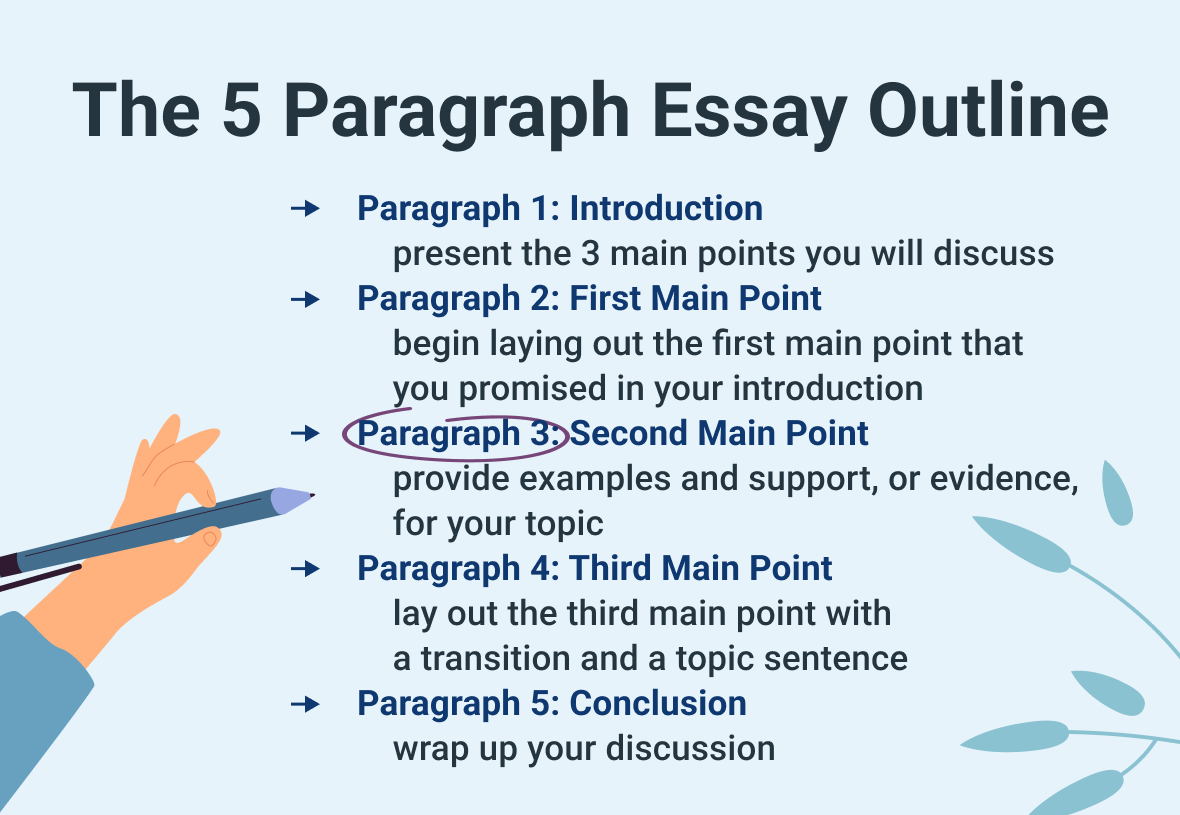
Now let’s discuss what should go in each paragraph. The following 5 paragraph essay template by our service should tell you exactly what you need to do to complete your assignment.

Paragraph 1: Introduction
In the introduction, you should provide background information on your topic. Usually, this information should be factual, especially for a history paper, but you can be creative in how you present it. The key is that you want to intrigue the reader. You want to draw the reader into your topic by creating a natural curiosity about it.
Somewhere in the middle of your introduction, you need to present the 3 main points you will discuss in your 5 paragraph essay . These 3 points are crucial for the basic essay, as you need to ensure you have enough to talk about, and it’s best to introduce them in the first paragraph. However, keep in mind that as your essays get longer, you may need to use more than 3 main points. That’s not something you should worry about now, though.
In any essay, your introductory paragraph should end with a strong thesis statement that tells readers exactly what you aim to prove. If the essay is meant only to inform, the thesis statement should clarify to readers exactly what you’re going to inform them of.
Paragraph 2: First Main Point
The second paragraph is where you begin laying out the 3 main points that you promised in your introduction. In this paragraph, the first sentence should transition from the previous paragraph to the current one. It should also clearly introduce the topic, your first main point.
The sentences that follow should provide examples and support, or evidence, for your topic . Readers should see that every example and every piece of support you provide (e.g., quotes, graphs, paraphrased information) is connected to your topic. They should never be left wondering why you included something.
Paragraph 3: Second Main Point
The third paragraph of your 5 paragraph essay is where you lay out the second main point. As the previous paragraph, it should begin with a transition and a description of the topic you’re about to discuss. Any examples or support you provide should be related to the topic at hand.
Paragraph 4: Third Main Point
The fourth paragraph is where you lay out the third main point that you promised in your essay’s introduction. Like any paragraph, it should have a transition and a topic sentence, and any examples or support should be related and interesting.
Paragraph 5: Conclusion
The last paragraph of a 5 paragraph essay — or any length should be a conclusion . It should not present new information, but it should always wrap up your discussion. One way to conclude is to summarize your 3 main points and then leave the reader with some key takeaways or a final thought about your thesis that drives your essay home.
However, your essay should not end with a cliffhanger. Remember that idea of cohesion? When the reader finishes your essay, he or she should feel like the information or argument is complete and fascinating.
Creating the 5 Paragraph Essay Graphic Organizer
Now that you understand the 5 paragraph essay format, it’s time to begin planning and writing your essay. To do that, custom writing professionals suggest using a graphic organizer. It can be a simple outline in bullet points, or it can be more visual in nature.
For example, you can create a mind map with your thesis idea — or even the whole thesis sentence — in the middle. Circle your thesis. From there, you can draw lines from the thesis outward and create new bubbles for your mind map, perhaps showing the main points you intend to discuss. Your mind map can include any information that’s helpful, and you may find that you want to expand on each main point with new bubbles.
PRODUCTION: Create a simple drawing of a mind map. Put the word “Thesis” in the middle (circled), and then put the words “Point 1,” “Point 2,” and “Point 3” around it. Draw circles around those words, and connect them to “Thesis” using lines. See example below.
Don’t spend too much time creating a graphic organizer, though. At some point, you need to start writing your 5 paragraph essay! Then the real fun begins. Read more on how to reference an essay

The 5 Paragraph Essay Rubric
If you’re wondering how your essay will be graded, you’re not alone. While the exact rubric your teacher uses will vary, here’s a basic one that may help you see what’s expected in your essay.
Grade A: Excellent
- Both introduction and thesis are strong.
- Details and examples are strong and well organized.
- The conclusion is strong enough.
- Grammar is correct.
Grade B: Good
- Has some spelling and grammar errors.
Grade C: Fair
- The introduction is good, but the thesis is weak.
- Examples used are weak.
- The conclusion is weak.
- Has major spelling and grammar errors.
Grade D: Poor
- Introduction and thesis are weak.
- Details and examples are weak and somewhat unorganized.
- Details or examples are few.
- Does not have a conclusion.
- Has serious spelling and grammar errors.
Grade F: Unsatisfactory
- Does not contain a thesis, and introduction is weak.
- Details and examples are weak and have no clear organization, or there are none at all.
In some cases, your teacher may give you a rubric before you start your essay. If so, make sure you read it carefully and don’t be afraid to ask questions if you don’t understand something. The rubric should tell you exactly what the teacher is looking for, whether it’s a 5 paragraph essay or something much longer. To succeed with your task, please find some essay writing tips .
5 Paragraph Essay Sample
Below you can find free 5 Paragraph essay sample called " The Impact of Technology on Education ".
"In today's rapidly advancing world, technology has become an integral part of our daily lives, revolutionizing various sectors, including education. Its influence on the way we learn, teach, and interact with educational materials is undeniable. This essay examines the significant impact of technology on education, highlighting its benefits and exploring real-life examples that illustrate its transformative power.
One of the primary benefits of technology in education is the enhanced accessibility to information. The internet has brought a wealth of knowledge right to our fingertips. Students can now access a vast array of educational resources, such as e-books, online articles, and interactive learning platforms. For instance, platforms like Khan Academy provide video tutorials and practice exercises on various subjects, enabling students to learn at their own pace and revisit concepts as needed. Furthermore, online forums and discussion boards foster collaborative learning, connecting students and educators from around the globe to share ideas and insights.
Another key advantage of technology in education is its ability to promote active and personalized learning. With the advent of educational software and applications, students can engage in interactive activities that cater to their individual needs and learning styles. For example, adaptive learning platforms like Duolingo tailor language lessons based on the learner's proficiency level and progress. This personalized approach helps students stay motivated and enhances their comprehension and retention of the material. Additionally, digital simulations and virtual reality tools provide immersive learning experiences, allowing students to explore complex concepts in a hands-on and engaging manner.
Furthermore, technology has revolutionized the way educators deliver instruction and assess students' progress. Online learning management systems, such as Moodle and Canvas, enable teachers to create and share course materials, assign tasks, and provide timely feedback. These platforms streamline administrative tasks, giving educators more time to focus on designing innovative lessons and individualized support for students. Moreover, digital assessment tools offer immediate feedback, enabling students to track their progress and identify areas for improvement. Platforms like Kahoot! and Quizlet make learning enjoyable by incorporating gamification elements, making the assessment process interactive and engaging.
In conclusion, technology has had a profound impact on education, transforming the way we learn and teach. The accessibility to vast amounts of information, the promotion of active and personalized learning, and the innovative methods of instruction and assessment are just a few examples of the positive effects of technology in education. However, it is important to ensure that technology is used as a tool to enhance learning rather than replace traditional teaching methods. As we continue to embrace technological advancements, it is crucial to strike a balance between leveraging its benefits and maintaining the human element in education. By doing so, we can harness the full potential of technology to create a future where education is accessible, engaging, and empowering for all learners."
Final Thoughts on the 5 Paragraph Essay
Once you’ve mastered the format of the 5 paragraph essay, you can write a paper at any length imaginable. Remember that it’s helpful to create an outline or graphic organizer to organize your ideas before you start writing , especially for a longer essay. If you have a rubric ahead of time, you’ll know exactly what you need to watch out for as you edit and polish your paper.

With the above information at your disposal and a rubric in-hand, you should have no excuses for a poor grade. Just be mindful of how much time you have to work, and break the writing into small chunks if you need to. Always start early to get the best grade possible.
Still not sure how to write a good 5 paragraph essay? You can order a high-quality custom essay from us or just take advantage of our top-notch paper editing and rewriting services. So in other words, we’ll write your essay from scratch, write a new draft, or just clean up the draft you’ve already written. Whatever you need to finish your writing and get an excellent grade, you can buy it right here. Check out our reviews if you want to see what some happy customers have said.
Frequently asked questions
She was flawless! first time using a website like this, I've ordered article review and i totally adored it! grammar punctuation, content - everything was on point
This writer is my go to, because whenever I need someone who I can trust my task to - I hire Joy. She wrote almost every paper for me for the last 2 years
Term paper done up to a highest standard, no revisions, perfect communication. 10s across the board!!!!!!!
I send him instructions and that's it. my paper was done 10 hours later, no stupid questions, he nailed it.
Sometimes I wonder if Michael is secretly a professor because he literally knows everything. HE DID SO WELL THAT MY PROF SHOWED MY PAPER AS AN EXAMPLE. unbelievable, many thanks
You Might Also Like
.png)
New Posts to Your Inbox!
Stay in touch
- help_outline help
iRubric: Rubric for Descriptive Paragraph Writing (grades 6-8)
Guide on How to Write a 5 Paragraph Essay Effortlessly

Defining What Is a 5 Paragraph Essay
Have you ever been assigned a five-paragraph essay and wondered what exactly it means? Don't worry; we all have been there. A five-paragraph essay is a standard academic writing format consisting of an introduction, three body paragraphs, and a conclusion.
In the introduction, you present your thesis statement, which is the main idea or argument you will discuss in your essay. The three body paragraphs present a separate supporting argument, while the conclusion summarizes the main points and restates the thesis differently.
While the five-paragraph essay is a tried and true format for many academic assignments, it's important to note that it's not the only way to write an essay. In fact, some educators argue that strict adherence to this format can stifle creativity and limit the development of more complex ideas.
However, mastering the five-paragraph essay is a valuable skill for any student, as it teaches the importance of structure and organization in writing. Also, it enables you to communicate your thoughts clearly and eloquently, which is crucial for effective communication in any area. So the next time you're faced with a five-paragraph essay assignment, embrace the challenge and use it as an opportunity to hone your writing skills.
And if you find it difficult to put your ideas into 5 paragraphs, ask our professional service - 'please write my essay ,' or ' write my paragraph ' and consider it done.
How to Write a 5 Paragraph Essay: General Tips
If you are struggling with how to write a 5 paragraph essay, don't worry! It's a common format that many students learn in their academic careers. Here are some tips from our admission essay writing service to help you write a successful five paragraph essay example:

- Start with a strong thesis statement : Among the 5 parts of essay, the thesis statement can be the most important. It presents the major topic you will debate throughout your essay while being explicit and simple.
- Use topic sentences to introduce each paragraph : The major idea you will address in each of the three body paragraphs should be established in a concise subject sentence.
- Use evidence to support your arguments : The evidence you present in your body paragraphs should back up your thesis. This can include facts, statistics, or examples from your research or personal experience.
- Include transitions: Use transitional words and phrases to make the flow of your essay easier. Words like 'although,' 'in addition,' and 'on the other hand' are examples of these.
- Write a strong conclusion: In addition to restating your thesis statement in a new way, your conclusion should highlight the key ideas of your essay. You might also leave the reader with a closing idea or query to reflect on.
- Edit and proofread: When you've completed writing your essay, thoroughly revise and proofread it. Make sure your thoughts are brief and clear and proofread your writing for grammatical and spelling mistakes.
By following these tips, you can write strong and effective five paragraph essays examples that will impress your teacher or professor.
5 Paragraph Essay Format
Let's readdress the five-paragraph essay format and explain it in more detail. So, as already mentioned, it is a widely-used writing structure taught in many schools and universities. A five-paragraph essay comprises an introduction, three body paragraphs, and a conclusion, each playing a significant role in creating a well-structured and coherent essay.
The introduction serves as the opening paragraph of the essay and sets the tone for the entire piece. It should captivate the reader's attention, provide relevant background information, and include a clear and concise thesis statement that presents the primary argument of the essay. For example, if the essay topic is about the benefits of exercise, the introduction may look something like this:
'Regular exercise provides numerous health benefits, including increased energy levels, improved mental health, and reduced risk of chronic diseases.'
The body paragraphs are the meat of the essay and should provide evidence and examples to support the thesis statement. Each body paragraph should begin with a subject sentence that states the major idea of the paragraph. Then, the writer should provide evidence to support the topic sentence. This evidence can be in the form of statistics, facts, or examples. For instance, if the essay is discussing the health benefits of exercise, a body paragraph might look like this:
'One of the key benefits of exercise is improved mental health. Regular exercise has been demonstrated in studies to lessen depressive and anxious symptoms and enhance mood.'
The essay's final paragraph, the conclusion, should repeat the thesis statement and summarize the essay's important ideas. A concluding idea or query might be included to give the reader something to ponder. For example, a conclusion for an essay on the benefits of exercise might look like this:
'In conclusion, exercise provides numerous health benefits, from increased energy levels to reduced risk of chronic diseases. We may enhance both our physical and emotional health and enjoy happier, more satisfying lives by including exercise into our daily routines.'
Overall, the 5 paragraph essay format is useful for organizing thoughts and ideas clearly and concisely. By following this format, writers can present their arguments logically and effectively, which is easy for the reader to follow.
Types of 5 Paragraph Essay
There are several types of five-paragraph essays, each with a slightly different focus or purpose. Here are some of the most common types of five-paragraph essays:

- Narrative essay : A narrative essay tells a story or recounts a personal experience. It typically includes a clear introductory paragraph, body sections that provide details about the story, and a conclusion that wraps up the narrative.
- Descriptive essay: A descriptive essay uses sensory language to describe a person, place, or thing. It often includes a clear thesis statement that identifies the subject of the description and body paragraphs that provide specific details to support the thesis.
- Expository essay: An expository essay offers details or clarifies a subject. It usually starts with a concise introduction that introduces the subject, is followed by body paragraphs that provide evidence and examples to back up the thesis, and ends with a summary of the key points.
- Persuasive essay: A persuasive essay argues for a particular viewpoint or position. It has a thesis statement that is clear, body paragraphs that give evidence and arguments in favor of it, and a conclusion that summarizes the important ideas and restates the thesis.
- Compare and contrast essay: An essay that compares and contrasts two or more subjects and looks at their similarities and differences. It usually starts out simply by introducing the topics being contrasted or compared, followed by body paragraphs that go into more depth on the similarities and differences, and a concluding paragraph that restates the important points.
Each type of five-paragraph essay has its own unique characteristics and requirements. When unsure how to write five paragraph essay, writers can choose the most appropriate structure for their topic by understanding the differences between these types.
5 Paragraph Essay Example Topics
Here are some potential topics for a 5 paragraph essay example. These essay topics are just a starting point and can be expanded upon to fit a wide range of writing essays and prompts.
- The Impact of Social Media on Teenage Communication Skills.
- How Daily Exercise Benefits Mental and Physical Health.
- The Importance of Learning a Second Language.
- The Effects of Global Warming on Marine Life.
- The Role of Technology in Modern Education.
- The Influence of Music on Youth Culture.
- The Pros and Cons of Uniform Policies in Schools.
- The Significance of Historical Monuments in Cultural Identity.
- The Growing Importance of Cybersecurity.
- The Evolution of the American Dream.
- The Impact of Diet on Cognitive Functioning.
- The Role of Art in Society.
- The Future of Renewable Energy Sources.
- The Effects of Urbanization on Wildlife.
- The Importance of Financial Literacy for Young Adults.
- The Influence of Advertising on Consumer Choices.
- The Role of Books in the Digital Age.\
- The Benefits and Challenges of Space Exploration.
- The Impact of Climate Change on Agriculture.
- The Ethical Implications of Genetic Modification.
Don't Let Essay Writing Stress You Out!
Order a high-quality, custom-written paper from our professional writing service and take the first step towards academic success!
General Grading Rubric for a 5 Paragraph Essay
The following is a general grading rubric that can be used to evaluate a five-paragraph essay:
Content (40%)
- A thesis statement is clear and specific
- The main points are well-developed and supported by evidence
- Ideas are organized logically and coherently
- Evidence and examples are relevant and support the main points
- The essay demonstrates a strong understanding of the topic
Organization (20%)
- The introduction effectively introduces the topic and thesis statement
- Body paragraphs are well-structured and have clear topic sentences
- Transitions between paragraphs are smooth and effective
- The concluding sentence effectively summarizes the main points and restates the thesis statement
Language and Style (20%)
- Writing is clear, concise, and easy to understand
- Language is appropriate for the audience and purpose
- Vocabulary is varied and appropriate
- Grammar, spelling, and punctuation are correct
Critical Thinking (20%)
- Student demonstrate an understanding of the topic beyond surface-level knowledge
- Student present a unique perspective or argument
- Student show evidence of critical thinking and analysis
- Students write well-supported conclusions
Considering the above, the paper should demonstrate a thorough understanding of the topic, clear organization, strong essay writing skills, and critical thinking. By using this grading rubric, the teacher can evaluate the essay holistically and provide detailed feedback to the student on areas of strength and areas for improvement.
Five Paragraph Essay Examples
Wrapping up: things to remember.
In conclusion, writing a five paragraph essay example can seem daunting at first, but it doesn't have to be a difficult task. Following these simple steps and tips, you can break down the process into manageable parts and create a clear, concise, and well-organized essay.
Remember to start with a strong thesis statement, use topic sentences to guide your paragraphs, and provide evidence and analysis to support your ideas. Don't forget to revise and proofread your work to make sure it is error-free and coherent. With time and practice, you'll be able to write a 5 paragraph essay with ease and assurance. Whether you're writing for school, work, or personal projects, these skills will serve you well and help you to communicate your ideas effectively.
Meanwhile, you can save time and reduce the stress associated with academic assignments by trusting our research paper writing services to handle the writing for you. So go ahead, buy an essay , and see how easy it can be to meet all of your professors' complex requirements!
Ready to Take the Stress Out of Essay Writing?
Order your 5 paragraph essay today and enjoy a high-quality, custom-written paper delivered promptly
Related Articles
.webp)
- Grades 6-12
- School Leaders
FREE Poetry Worksheet Bundle! Perfect for National Poetry Month.
15 Helpful Scoring Rubric Examples for All Grades and Subjects
In the end, they actually make grading easier.

When it comes to student assessment and evaluation, there are a lot of methods to consider. In some cases, testing is the best way to assess a student’s knowledge, and the answers are either right or wrong. But often, assessing a student’s performance is much less clear-cut. In these situations, a scoring rubric is often the way to go, especially if you’re using standards-based grading . Here’s what you need to know about this useful tool, along with lots of rubric examples to get you started.
What is a scoring rubric?
In the United States, a rubric is a guide that lays out the performance expectations for an assignment. It helps students understand what’s required of them, and guides teachers through the evaluation process. (Note that in other countries, the term “rubric” may instead refer to the set of instructions at the beginning of an exam. To avoid confusion, some people use the term “scoring rubric” instead.)
A rubric generally has three parts:
- Performance criteria: These are the various aspects on which the assignment will be evaluated. They should align with the desired learning outcomes for the assignment.
- Rating scale: This could be a number system (often 1 to 4) or words like “exceeds expectations, meets expectations, below expectations,” etc.
- Indicators: These describe the qualities needed to earn a specific rating for each of the performance criteria. The level of detail may vary depending on the assignment and the purpose of the rubric itself.
Rubrics take more time to develop up front, but they help ensure more consistent assessment, especially when the skills being assessed are more subjective. A well-developed rubric can actually save teachers a lot of time when it comes to grading. What’s more, sharing your scoring rubric with students in advance often helps improve performance . This way, students have a clear picture of what’s expected of them and what they need to do to achieve a specific grade or performance rating.
Learn more about why and how to use a rubric here.

Types of Rubric
There are three basic rubric categories, each with its own purpose.
Holistic Rubric

Source: Cambrian College
This type of rubric combines all the scoring criteria in a single scale. They’re quick to create and use, but they have drawbacks. If a student’s work spans different levels, it can be difficult to decide which score to assign. They also make it harder to provide feedback on specific aspects.
Traditional letter grades are a type of holistic rubric. So are the popular “hamburger rubric” and “ cupcake rubric ” examples. Learn more about holistic rubrics here.
Analytic Rubric

Source: University of Nebraska
Analytic rubrics are much more complex and generally take a great deal more time up front to design. They include specific details of the expected learning outcomes, and descriptions of what criteria are required to meet various performance ratings in each. Each rating is assigned a point value, and the total number of points earned determines the overall grade for the assignment.
Though they’re more time-intensive to create, analytic rubrics actually save time while grading. Teachers can simply circle or highlight any relevant phrases in each rating, and add a comment or two if needed. They also help ensure consistency in grading, and make it much easier for students to understand what’s expected of them.
Learn more about analytic rubrics here.
Developmental Rubric

Source: Deb’s Data Digest
A developmental rubric is a type of analytic rubric, but it’s used to assess progress along the way rather than determining a final score on an assignment. The details in these rubrics help students understand their achievements, as well as highlight the specific skills they still need to improve.
Developmental rubrics are essentially a subset of analytic rubrics. They leave off the point values, though, and focus instead on giving feedback using the criteria and indicators of performance.
Learn how to use developmental rubrics here.
Ready to create your own rubrics? Find general tips on designing rubrics here. Then, check out these examples across all grades and subjects to inspire you.
Elementary School Rubric Examples
These elementary school rubric examples come from real teachers who use them with their students. Adapt them to fit your needs and grade level.
Reading Fluency Rubric

You can use this one as an analytic rubric by counting up points to earn a final score, or just to provide developmental feedback. There’s a second rubric page available specifically to assess prosody (reading with expression).
Learn more: Teacher Thrive
Reading Comprehension Rubric

The nice thing about this rubric is that you can use it at any grade level, for any text. If you like this style, you can get a reading fluency rubric here too.
Learn more: Pawprints Resource Center
Written Response Rubric

Rubrics aren’t just for huge projects. They can also help kids work on very specific skills, like this one for improving written responses on assessments.
Learn more: Dianna Radcliffe: Teaching Upper Elementary and More
Interactive Notebook Rubric

If you use interactive notebooks as a learning tool , this rubric can help kids stay on track and meet your expectations.
Learn more: Classroom Nook
Project Rubric

Use this simple rubric as it is, or tweak it to include more specific indicators for the project you have in mind.
Learn more: Tales of a Title One Teacher
Behavior Rubric

Developmental rubrics are perfect for assessing behavior and helping students identify opportunities for improvement. Send these home regularly to keep parents in the loop.
Learn more: Teachers.net Gazette
Middle School Rubric Examples
In middle school, use rubrics to offer detailed feedback on projects, presentations, and more. Be sure to share them with students in advance, and encourage them to use them as they work so they’ll know if they’re meeting expectations.
Argumentative Writing Rubric

Argumentative writing is a part of language arts, social studies, science, and more. That makes this rubric especially useful.
Learn more: Dr. Caitlyn Tucker
Role-Play Rubric

Role-plays can be really useful when teaching social and critical thinking skills, but it’s hard to assess them. Try a rubric like this one to evaluate and provide useful feedback.
Learn more: A Question of Influence
Art Project Rubric

Art is one of those subjects where grading can feel very subjective. Bring some objectivity to the process with a rubric like this.
Source: Art Ed Guru
Diorama Project Rubric

You can use diorama projects in almost any subject, and they’re a great chance to encourage creativity. Simplify the grading process and help kids know how to make their projects shine with this scoring rubric.
Learn more: Historyourstory.com
Oral Presentation Rubric

Rubrics are terrific for grading presentations, since you can include a variety of skills and other criteria. Consider letting students use a rubric like this to offer peer feedback too.
Learn more: Bright Hub Education
High School Rubric Examples
In high school, it’s important to include your grading rubrics when you give assignments like presentations, research projects, or essays. Kids who go on to college will definitely encounter rubrics, so helping them become familiar with them now will help in the future.
Presentation Rubric

Analyze a student’s presentation both for content and communication skills with a rubric like this one. If needed, create a separate one for content knowledge with even more criteria and indicators.
Learn more: Michael A. Pena Jr.
Debate Rubric

Debate is a valuable learning tool that encourages critical thinking and oral communication skills. This rubric can help you assess those skills objectively.
Learn more: Education World
Project-Based Learning Rubric

Implementing project-based learning can be time-intensive, but the payoffs are worth it. Try this rubric to make student expectations clear and end-of-project assessment easier.
Learn more: Free Technology for Teachers
100-Point Essay Rubric

Need an easy way to convert a scoring rubric to a letter grade? This example for essay writing earns students a final score out of 100 points.
Learn more: Learn for Your Life
Drama Performance Rubric

If you’re unsure how to grade a student’s participation and performance in drama class, consider this example. It offers lots of objective criteria and indicators to evaluate.
Learn more: Chase March
How do you use rubrics in your classroom? Come share your thoughts and exchange ideas in the WeAreTeachers HELPLINE group on Facebook .
Plus, 25 of the best alternative assessment ideas ..

You Might Also Like
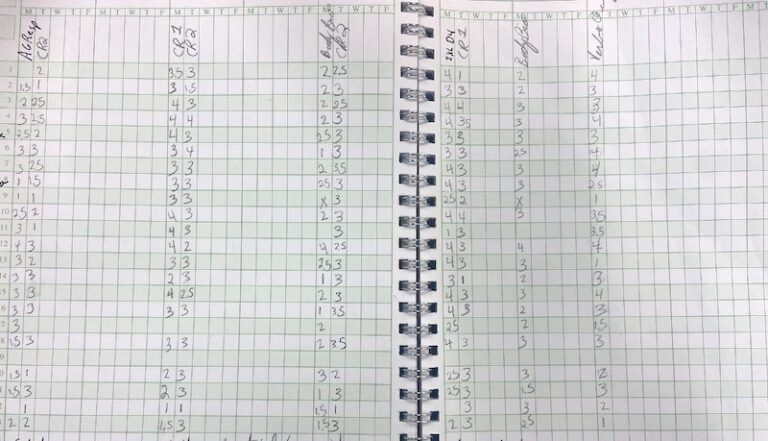
I Switched to Standards-Based Grading—Why I’m Loving It
Reduced grading time? Yes, please! Continue Reading
Copyright © 2023. All rights reserved. 5335 Gate Parkway, Jacksonville, FL 32256
All Formats
Resource types, all resource types.
- Rating Count
- Price (Ascending)
- Price (Descending)
- Most Recent
Free 5th grade writing rubrics

Reading Comprehension Strategies MEGA Bundle + Differentiated Reading Passages!

Words Matter: A Poem About Animal-Friendly Idioms

Kindergarten Decodable Sentence Activities MEGA Bundle

Poetry Writing Bundle with Interactive Notebook & Lapbook
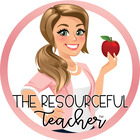
5th Grade 160 Word Problems Math Problem Solving CCSS *All Standards*

Spring Nonfiction Reading Comprehension Passages and Questions

5th Grade Math Centers Task Cards Bundle Games Math Review Activities Test Prep

3 Hansel & Gretel Readers Theater Scripts with Reading Comprehension and More
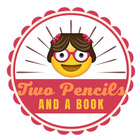
FREE Narrative Writing Checklists | Rubrics | All Ages | Editing Assessment

Reading Paired Passages Comprehension Questions Test Prep

How to Write A Paragraph

Writing Rubric - Expository, Argumentative, Narrative (Common Core)

RACE Strategy Grading Rubric

Cell Phones Passages and Writing Prompts | B.E.S.T. Text Based Writing Essays

Creative Writing - Student Peer/Self Editing Checklist and Rubric

Persuasive Essay Rubric (Common Core Aligned)

ESL Writing Activities: Quick Write Rubric & Prompt

Writing graphic organizers, rubrics, and handouts FREEBIE SAMPLE

5th grade: Writing Rubrics for narrative, informational and opinion essays

- Word Document File
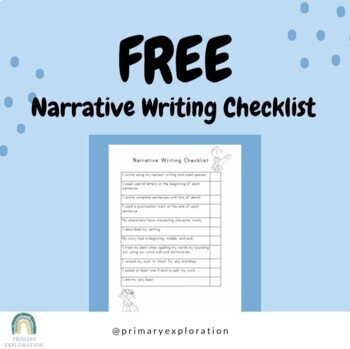
Narrative Writing Checklist - FREE - Primary Exploration - Grade 1, 2, 3, 4, 5

Tools For Writers: Peer Editing Checklist, Feedback Rubric, Reference List

Writing Rubric and Student Response Sheet
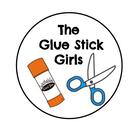
Biography Report Rubric

On Demand Free Writing Assessment - Easy Grade Opinion Writing Prompt

Presentation & Partner Peer Review Rubric

Paragraph Writing Rubric

CUPS Checklist for Editing Narrative/Writing Stories
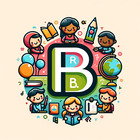
Middle School Writing Rubric

Six Traits Personal Narrative Writing Rubric

FREE 4-Point Writing Rubric (Checklist) for Expository Writing Grades 4-5 (NYS)

6 NO-PREP Gr 5 NONFICTION Text-Based WRITING PROMPTS State Test Prep EON Set 1

Paragraph Writing Checklist

Find Writing resources | TPT
Learn more about writing resources.
Writing worksheets can help your child develop essential writing and literacy skills needed for school and life. If you’re a teacher or parent looking for printable and digital writing resources to help your student learn a writing concept, look no further! TPT has an extensive collection of resources, created by other teachers, that are designed to help with any need across grade levels.
For elementary students who are just learning to write, you can use worksheets to practice letter formation. Students in middle and high school can use learning stations to learn how to write and revise essays. With plenty of TPT resources at your fingertips, you can sharpen your student's writing skills in no time. Extend writing activities beyond the classroom and observe as your child nurtures their imagination, enriches their vocabulary, and enhances their storytelling prowess.
Fun and engaging writing activities to try
Here are a few ideas for writing activities — from our teacher-created resources — that you can find on TPT and that are designed to teach students how to write effectively. (Pro tip: These worksheets serve as an excellent complement to our reading materials.)
Encourage students to keep daily journals where they can freely express their thoughts, feelings, and experiences. This practice helps them develop their writing style and build the habit of writing regularly.
Writing Prompts
Provide engaging prompts that encourage imaginative storytelling. For instance, you could ask students to write about a world without the internet, or ask them to describe something only using one of their five senses (sight, sound, smell, touch, or taste).
Peer Editing
Have students exchange their written work with a peer for feedback. This helps them strengthen their ability to identify and correct mistakes in grammar, punctuation, and spelling; give constructive criticism; and revise their writing based on feedback.
Sentence and Paragraph Construction
Provide sentence and paragraph building exercises to help students understand the basic structure of writing and how to organize their ideas coherently.
Letter Writing
Ask students to write letters to real or fictional recipients. They could compose formal letters, persuasive letters on specific topics, thank-you notes, or postcards.
Create a classroom blog where students can publish their writing for a wider audience. This teaches them to write for a purpose and consider their audience's perspective.
Research Papers
Guide students through the process of researching and writing informative or argumentative essays. Teach them how to construct persuasive arguments and counterarguments on various topics, include evidence, and cite sources.
Poetry Writing
Explore different forms of poetry, such as haikus, sonnets, and free verse. Encourage students to experiment with imagery, rhythm, and metaphor.
By incorporating these (and other!) writing activities into your lesson plans, you can nurture a love for writing.
Frequently asked questions about teaching writing
What types of writing resources are available on tpt.
There are many different types of writing resources sold by Sellers on TPT. Some popular writing lessons include creative writing, poetry, writing essays, writing expository, and handwriting.
How do I find writing lessons on TPT?
Educators can save time preparing writing lessons with resources created by experienced teachers. Simply start a search for writing resources on the TPT marketplace, and filter by grade level, price, and/or resource type to find materials that've been proven to work in classrooms like yours. No matter what you’re teaching, there are plenty of writing lessons and activities sold by Sellers on TPT that are tailored to meet your students' skill levels.
- We're hiring
- Help & FAQ
- Privacy policy
- Student privacy
- Terms of service
- Tell us what you think

IMAGES
VIDEO
COMMENTS
6th Grade 5 Paragraph Essay Rubric Student Name: Essay Writer's Name: CATEGORY 4 3 2 1 Introduction Introduces essay topic, main topic 1, main topic 2, main topic 3, and has a closing sentence in this order. Introduces essay topic and main topics in no particular order. Introduces essay topic, but main topics are unclear.
You use some of the target vocabulary from the subunit. Vocabulary/word choice is impressive. All words are used appropriately. Vocabulary/word choice is adequate, but could be improved. More adjectives, adverbs, and descriptive words are needed. Vocabulary/word choice is clearly limited, affecting written communication.
The essay contains 1 or 2 . errors in grammar, word usage or sentence structure. The essay contains 3 or 4 errors in grammar, word usage or sentence structure. The essay is readable, but contains 5 or more errors in grammar, word usage or sentence structure. The essay is unreadable because of errors in grammar, word usage or sentence structure.
Essays in 6th Grade: A Basic Format that Elevates the Standard 5-Paragraph Structure. 6th grade is such a funny year. Funny haha and funny weird. Student writing levels are all over the map. You will have students coming to you writing on a very elementary level, still needing loads of help with grammar and paragraph formation.
Best used for students learning to write basic paragraphs. Can be used a tool to guide students in the revision process. Bonus: Just updated to add a 6 point writing rubric and time order/transitional words reference chart for your. Subjects: English Language Arts, Grammar, Writing. Grades: 2 nd - 6 th.
1. Ideas are there, but they do not always support the topic. The writer discusses random ideas and does not make a strong effort to address the topic. 2. The writer makes an effort to support the topic but sometimes sentences are irrelevant and incomplete. Ideas and details are predictable and basic. 3.
Essay introduces two things that are different. The writer uses body paragraph one to explain topic one, body paragraph two to explain topic two, and discusses their similarities in paragraph four. The conclusion recaps the essay.(16-20 Points)
Each new paragraph relates to and builds on the previous section logically. 40. Essay maintains a clear organization throughout. Each paragraph is essential to the purpose of the essay. 35. Essay contains a somewhat clear organization. Most paragraphs are essential to the purpose of the essay. 33. Essay does not contain a clear organization.
Holistic scoring is a quick method of evaluating a composition based on the reader's general impres-sion of the overall quality of the writing—you can generally read a student's composition and assign a score to it in two or three minutes. Holistic scoring is usually based on a scale of 0-4, 0-5, or 0-6.
Grading rubrics can be of great benefit to both you and your students. For you, a rubric saves time and decreases subjectivity. Specific criteria are explicitly stated, facilitating the grading process and increasing your objectivity. For students, the use of grading rubrics helps them to meet or exceed expectations, to view the grading process ...
Basic 2. There are several errors which detract from the overall meaning and flow of the essay. Proficient 3. Minimal errors are found (5-8). They do not detract from the general flow of the essay. ADVANCED 4. Errors in grammar, spelling, punctuation, and capitalization are minimal and not distracting. (0-4). Score.
We always start with simple paragraphs. Yes, this is basic, but if your students cannot write excellent paragraphs, their five paragraph essays will be train wrecks. Trust me! We spend a while cementing paragraph structure: Topic Sentence. Detail #1. Detail #2. Detail #3. Closing Sentence.
This variety pack includes EIGHT 4-point, proficiency-based scoring sheets for five-paragraph essays and ONE 3-point, proficiency-based scoring sheet, all designed for use in grades 5-12 when paired with the Five-Paragraph Essay Scoring Guide. Mix and match proficiency levels within the same classroom or across remediation and advanced classes.
GRADE 6 LITERARY ANALYSIS RUBRIC Score 4 3 2 1 Reading Comprehension Provides an in-depth and accurate demonstration of what is stated in the text and/or what can be inferred from the text(s). Demonstrates a complete understanding of central ideas and information. Provides an accurate demonstration of what is stated in the text and/or what can be
Writing-essays. ELA test prep. Math. Math by grade. PreK math. Kindergarten math. 1st grade math. 2nd grade math. 3rd grade math. 4th grade math. 5th grade math. 6th grade math. ... Free 6th grade writing rubric pdfs. Sponsored. March Coloring Pages Parts of Speech Worksheets With Spring Color by Number. It's a Teacher Thing.
Grade _5_ Six Traits Rubric for Expository Writing Ideas 6 The topic, focus, and details make the essay truly memorable. 5 The essay is informative with a clear focus and specific details. 4 The essay is informative with a clear focus. More specific details are needed. 3 The focus of the essay needs to be clearer, and more specific details are ...
Put the word "Thesis" in the middle (circled), and then put the words "Point 1," "Point 2," and "Point 3" around it. Draw circles around those words, and connect them to "Thesis" using lines. See example below. Don't spend too much time creating a graphic organizer, though. At some point, you need to start writing your 5 ...
Rubric for Descriptive Paragraph Writing (grades 6-8) The topic sentence is the first sentence in the paragraph. It is a clear statement of the paragraph content. The topic sentence gives some clarity of the overall connectivity of the sentences present. The topic sentence gives little evidence of a relevant topic connecting to the other sentences.
Here are some tips from our admission essay writing service to help you write a successful five paragraph essay example: Start with a strong thesis statement: Among the 5 parts of essay, the thesis statement can be the most important. It presents the major topic you will debate throughout your essay while being explicit and simple.
Try this rubric to make student expectations clear and end-of-project assessment easier. Learn more: Free Technology for Teachers. 100-Point Essay Rubric. Need an easy way to convert a scoring rubric to a letter grade? This example for essay writing earns students a final score out of 100 points. Learn more: Learn for Your Life. Drama ...
Rubric - Language Arts Grade 6 Descriptive. Criteria. 4 Points. 3 Points. 2 Points. 1 Point. Use of Sensory Language. The essay includes vivid and detailed sensory language that effectively appeals to the reader's senses. The essay includes some sensory language that appeals to the reader's senses, but could be more detailed and vivid.
2. Sample lesson plans- It is intended to be taught over several days- about five 30 minute blocks over 1 week.3. Basic paragraph rubric4. Sample paragraphs 5. A list of 5 topics for practicing how to write their own paragraphsStudents learn- 1. The parts of a paragraph (topic sentence, details, and closing sentence.